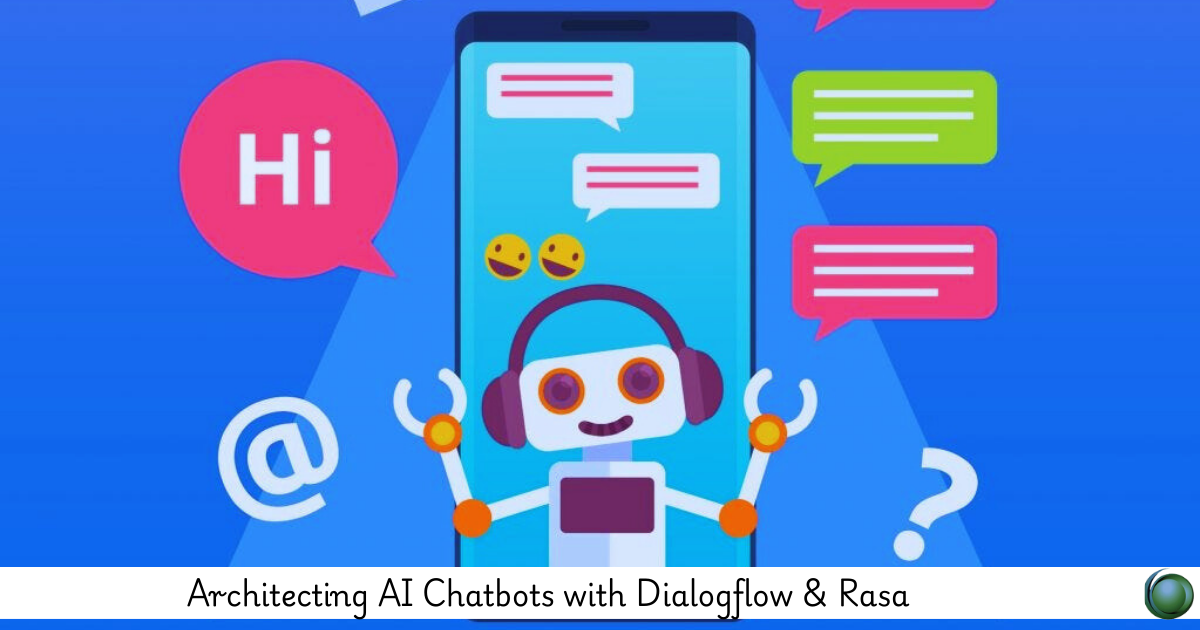Description
Introduction
In this course, “Architecting AI Chatbots with Dialogflow & Rasa,” you will learn to build powerful, intelligent conversational agents using two of the leading frameworks in AI chatbot development: Dialogflow and Rasa. By the end of this course, you’ll be equipped to architect and deploy AI-driven chatbots for real-world applications across a variety of industries.
Prerequisites
-
Basic programming knowledge (preferably in Python)
-
Familiarity with machine learning concepts is helpful but not required
-
No prior experience with Dialogflow or Rasa is necessary
Table of Contents
-
Introduction to AI Chatbots
1.1 What is an AI Chatbot?
1.2 The Role of Conversational AI in Modern Business
1.3 Overview of Dialogflow and Rasa
1.4 Key Differences Between Dialogflow and Rasa -
Getting Started with Dialogflow
2.1 Setting Up a Dialogflow Account
2.2 Understanding Intents and Entities
2.3 Creating Your First Dialogflow Agent
2.4 Integrating Dialogflow with Communication Platforms (e.g., Slack, Facebook Messenger) -
Building Intents and Entities in Dialogflow
3.1 Designing Intents: Mapping User Queries
3.2 Creating Entities for Dynamic Data Extraction
3.3 Using Dialogflow’s Machine Learning Features to Enhance Intent Recognition
3.4 Best Practices for Structuring Dialogflow Agents -
Advanced Features in Dialogflow
4.1 Context Management for Multi-turn Conversations
4.2 Fulfillment with Webhooks and APIs
4.3 Rich Responses and Custom Payloads
4.4 Using Dialogflow’s Pre-built Agents and Templates for Quick Setup -
Introduction to Rasa
5.1 What is Rasa? Overview of the Framework
5.2 Setting Up Rasa and Running Your First Rasa Bot
5.3 Rasa NLU and Rasa Core: Understanding Their Roles
5.4 How Rasa Differs from Dialogflow and Why You Should Consider It -
Building Intents, Entities, and Stories in Rasa
6.1 Creating Intents and Entities in Rasa
6.2 Designing Stories for Conversation Flow
6.3 Training the NLU Model with Custom Data
6.4 Handling User Input with Rasa Core -
Integrating Rasa with External Services
7.1 Setting Up Rasa Connectors for Communication Channels
7.2 Creating Custom Actions with Python
7.3 Integrating with APIs for Dynamic Responses
7.4 Webhooks and Real-time Data Integration in Rasa -
Building Robust Conversations with Context Management
8.1 Handling Context and Session Management in Dialogflow
8.2 Using Slots and Forms in Rasa for Data Collection
8.3 Managing Multi-turn Dialogues and Context Persistence
8.4 Best Practices for Maintaining Context in Complex Conversations -
Testing and Debugging AI Chatbots
9.1 Using the Dialogflow Simulator for Testing
9.2 Debugging and Improving Intents and Entities in Dialogflow
9.3 Testing and Evaluating Rasa Models
9.4 Using Rasa X for Continuous Testing and Deployment -
Deploying AI Chatbots to Production
10.1 Preparing Your Dialogflow Bot for Production
10.2 Best Practices for Deploying Rasa in Production Environments
10.3 Handling Scalability and Performance in Chatbot Deployment
10.4 Monitoring and Maintaining AI Chatbots Post-Deployment -
Ethical Considerations in AI Chatbot Development
11.1 Understanding Bias in AI Models
11.2 Ensuring Privacy and Data Protection in Chatbots
11.3 Implementing Ethical Decision-Making in Chatbot Design
11.4 Complying with Legal Regulations and Data Laws -
Future of AI Chatbots and Conclusion
12.1 Emerging Trends in Conversational AI
12.2 How Chatbots are Transforming Customer Service and Other Industries
12.3 Enhancements in Dialogflow and Rasa: What’s Next?
12.4 Final Thoughts and Next Steps in Chatbot Development
By the end of this course, you will have a deep understanding of how to architect and deploy advanced AI chatbots using Dialogflow and Rasa. You will be able to integrate these bots into real-world applications, manage complex conversations, and optimize chatbot performance for diverse business needs. With hands-on experience and knowledge of best practices, you’ll be ready to build scalable, intelligent conversational agents for any use case.







Reviews
There are no reviews yet.